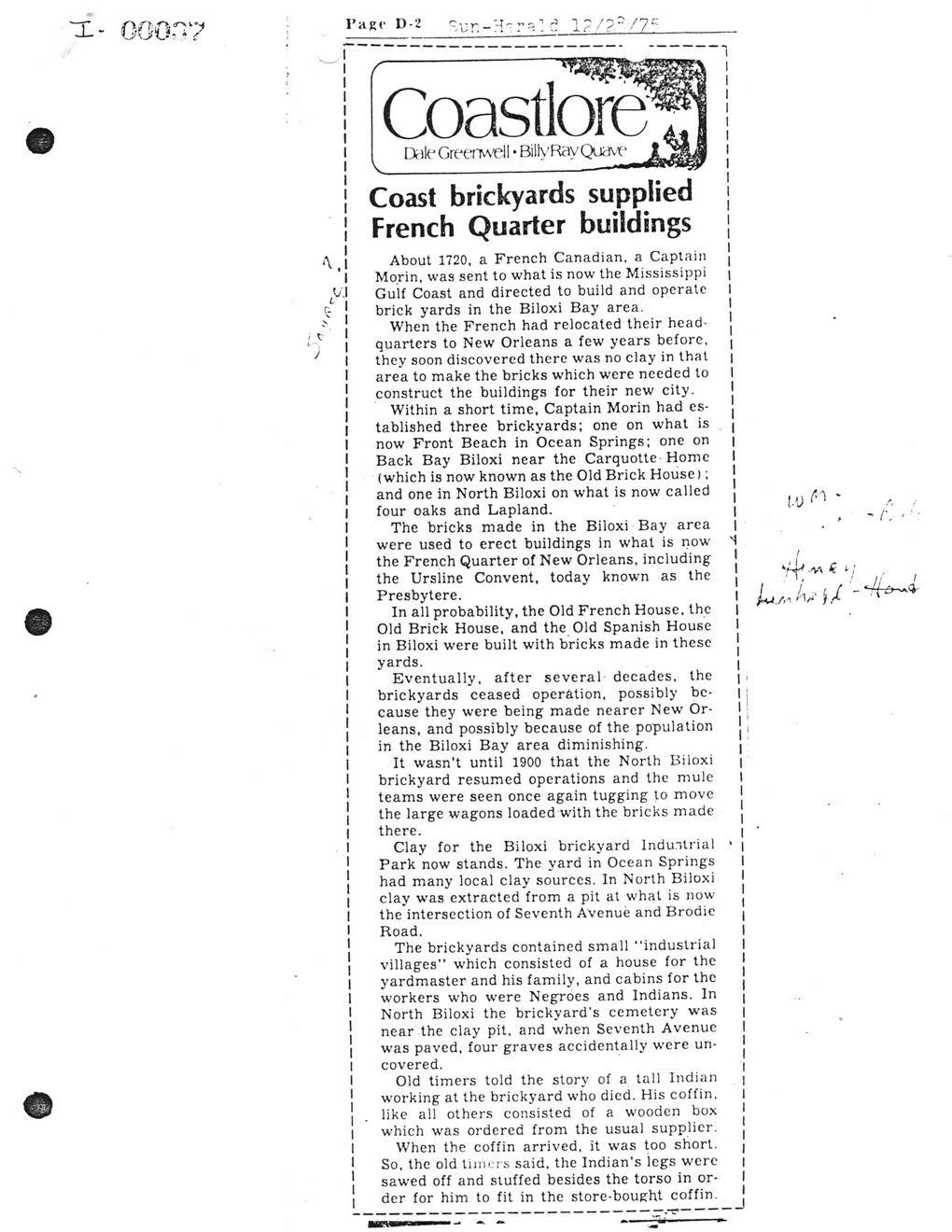This text was obtained via automated optical character recognition.
It has not been edited and may therefore contain several errors.
Page D-2 Sur.-H~ r q ? d l?/?~/7c Coast brickyards supplied French Quarter buildings About 1720, a French Canadian, a Captain Morin, was sent to what is now the Mississippi Gulf Coast and directed to build and operate brick yards in the Biloxi Bay area. When the French had relocated their headquarters to New Orleans a few years before, they soon discovered there was no clay in that area to make the bricks which were needed to construct the buildings for their new city. Within a short time, Captain Morin had established three brickyards; one on what is now Front Beach in Ocean Springs; one on Back Bay Biloxi near the Carquotte Home (which is now known as the Old Brick House); and one in North Biloxi on what is now called four oaks and Lapland. The bricks made in the Biloxi Bay area were used to erect buildings in what is now ' the French Quarter of New Orleans, including the Ursline Convent, today known as the Presbytere. In all probability, the Old French House, the Old Brick House, and the Old Spanish House in Biloxi were built with bricks made in these yards. Eventually, after several decades, the brickyards ceased operation, possibly because they were being made nearer New Orleans, and possibly because of the population in the Biloxi Bay area diminishing. It wasn’t until 1900 that the North Biloxi brickyard resumed operations and the mule teams were seen once again tugging to move the large wagons loaded with the bricks made there. Clay for the Biloxi brickyard Industrial ' Park now stands. The yard in Ocean Springs had many local clay sources. In North Biloxi clay was extracted from a pit at what is now the intersection of Seventh Avenue and Brodie Road. The brickyards contained small “industrial villages” which consisted of a house for the yardmaster and his family, and cabins for the workers who were Negroes and Indians. In North Biloxi the brickyard’s cemetery was near the clay pit, and when Seventh Avenue was paved, four graves accidentally were uncovered. Old timers told the story of a tall Indian working at the brickyard who died. His coffin, like all others consisted of a wooden box which was ordered from the usual supplier. When the coffin arrived, it was too short. So, the old timers said, the Indian’s legs were sawed off and stuffed besides the torso in order for him to fit in the store-bought coffin. ------------------------------------------------------ Wnni - ---------

New Orleans and Louisiana Document (006)